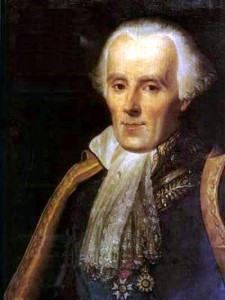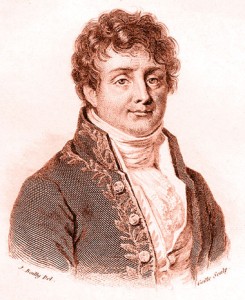Physics is a branch of science concerned with the nature and properties of matter and energy. It deals with the following subject matters, heat, light, radiation, electricity, magnetism, and atomic structure.
During the Victorian period, there was rapid building and expansion of scientific laboratories that allowed further development of scientific techniques and research both for public and private concerns.
Physics in the Victorian era was one of the scientific fields that were given focused and attention during this period.

Victorian Physics’ main focus was the study of light, heat, electricity, and magnetism, or the imponderables. These studies allowed various scientific discoveries in the Victorian era.
Victorian Physics in Nineteenth Century
Victorian Physicists: Laplace and the Imponderables
Pierre-Simon Laplace (1749 – 1827) was a prominent French scholar whose works and researches became an important foundation towards the development of Victorian physics, mathematics, and astronomy during the 19th century.
His seminal works included the formulation of Laplace’s equation and Laplacian differential operator that was widely used in the development of a new universal physics by his successors during the Victorian era.
This notion of universal physics during the Victorian Era Physics is primarily grounded on a hypothesis between molecular motions and forces.

Basically, each and every physical and chemical phenomenon could be interpreted and described in terms of short ranged forces upon particles, this aggregation subsequently form the aforementioned imponderables – light, heat, electricity, and magnetism.
With this, Laplace and other Victorian-era scientists suggested that this application of physics was not only limited to mechanical dilemma but also extended to optical, thermal and electrical phenomena.
These theories and findings made a major breakthrough in the Victorian Era Physics as it was continued by Laplace’s successor and other enthusiastic scholars.
Victorian Physics: Fourier and the Heat Theory
Joseph Fourier (1768 -1830) was a physicist-successor of Laplace, a Laplacian, who was infamous for his theory of heat transfer and vibrations. Generally, the alarming discovery of the greenhouse effect was credited to the life-long research and experiments conducted by Fourier.

His study of heat theory revolved around the rational mechanics basing the hypothesis on the differential equations that described the transmission of heat. These equations were distinctive from all hypotheses, particularly the physical propositions.
Basically, Fourier’s Victorian science experiments did not rely on speculations on the nature of heat but rather resolved in a more scientific approach through experimental settings.
Victorian era Physics: Fresnel and Light Waves
Agustin-Jean Fresnel (1788-1827) was an engineer and physicist who significantly contributed to the foundation of wave optics. Physical optics or wave optics is a part of optics, which treats light with explicit recognition of the nature of the wave.

Fresnel studied the character of light both speculatively and scientific experimentally. One of his greatest contribution and inventions is Fresnel lens that was widely used in lighthouses.
His formulated Fresnel equation on waves and reflectivity has become the basis for many of today’s computer and digital graphics.